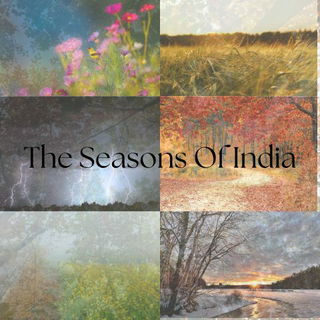July is the seventh month of the Gregorian calendar and has 31 days. It is known for its sunny, warm weather in the Northern Hemisphere and cold, chilly winters in the Southern Hemisphere.
In the Arctic, the midnight sun continues to brighten the days, while regions closer to the equator experience the peak of monsoon rains or dry, stable weather.

How Was July Named
July was named after Julius Caesar, the famous Roman leader. It was originally called Quintilis in the old Roman calendar because it was the fifth month when the year had only ten months.
In 46 BCE, Julius Caesar changed the calendar by adding January and February, making Quintilis the seventh month. After his death in 44 BCE, the Roman Senate renamed the month Iulius (July) to honor him, as he was born in this month.
Over time, the name changed in different languages, becoming "July" in English. This was one of the first times a month was named after a person, showing how important Caesar was to Roman history.
Why is July the 7th Month
In the ancient Roman calendar, created by Romulus, July was the fifth month of a ten-month year with 304 days. The months were:
- Martius (March)
- Aprilis (April)
- Maius (May)
- Junius (June)
- Quintilis (July)
- Sextilis (August)
- September
- October
- November
- December
King Numa Pompilius restructured the calendar around 713 BCE by adding January and February, creating a 12-month lunar year.
In 153 BCE, the consular year began in January, shifting July to the seventh position.
Julius Caesar's Julian calendar reform in 46 BCE fixed July's length at 31 days.
This calendar eventually evolved into the Gregorian calendar in 1582, which remains in use today.
The Climatic Conditions in July Across The Globe
In the Northern Hemisphere, July is typically one of the hottest months of the year, marked by heatwaves, high humidity, and long daylight hours.
Meanwhile, in the Southern Hemisphere, it signifies the middle of winter, with shorter days, colder temperatures, and snowfall in some areas.
Rainfall patterns vary, with monsoon rains peaking in South Asia and other tropical regions, bringing both relief and challenges, while areas like the Mediterranean enjoy hot, dry summers.
Agriculture thrives in July, with summer produce reaching its peak in the Northern Hemisphere.
Fruits such as raspberries, cherries, peaches, and melons are abundant, alongside vegetables like zucchini, eggplants, peppers, and sweet corn. Grains like wheat, oats, and others are also harvested.
In the Southern Hemisphere, it is the season for winter crops, including vegetables like cabbage, broccoli, kale, and turnips, as well as citrus fruits like oranges, grapefruits, and lemons.
Markets are vibrant and full of fresh produce, showcasing the season's natural abundance.
Important Day and Observances In July
- July 1: Canada Day
- July 4: Independence Day (U.S.)
- July 7: Tanabata (Japan)
- July 14: Bastille Day (France)
- July 20: Moon Day (anniversary of the Apollo 11 moon landing)
- July 22: Hammock Day
- July 24: Cousin's Day
- July 30: International Day of Friendship
Interesting July Facts
- July's Birthstone is ruby, symbolizing love, passion, and vitality
- Birth flowers are larkspur and water lily, representing positivity and purity
- July Zodiac signs are Cancer until July 22 and Leo starting July 23
- Full moon is called the "Buck Moon," named for the time when deer grow new antlers
- Fun fact is July is the only month named after a real person, Julius Caesar
Recommended Articles
- The 12 Months Of The Year (Everything You Need To Know)
- January: Why Is The 1st Month Of The Year
- Finding February: The Significance Of The Second And Shortest Month
- All About March: History, Celebrations, and Seasonal Highlights
- April: Meaning, Celebrations, and Seasonal Highlights You Should Know
- The Meaning Of May: Everything You Need To Know About The Fifth Month
- June Uncovered : The Significance Of The Sixth Month Of The Year











